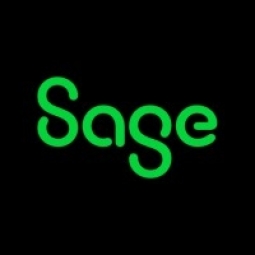公司规模
SME
地区
- America
国家
- United States
产品
- Sage 100 ERP
- Sage 50—U.S. Edition
- StarShip
技术栈
- ERP
- Sales Order module
- Inventory Management
实施规模
- Enterprise-wide Deployment
影响指标
- Productivity Improvements
- Cost Savings
技术
- 功能应用 - 企业资源规划系统 (ERP)
- 功能应用 - 库存管理系统
适用行业
- 零售
适用功能
- 物流运输
- 销售与市场营销
用例
- 库存管理
- 供应链可见性(SCV)
服务
- 系统集成
关于客户
Silk Botanica 是一家总部位于旧金山的公司,专门从事植物学人造花的制作和分销。该公司向全国各地的精品零售商和国际展厅出售其优质的永久花卉、叶子和装饰配件。Silk Botanica 的设计师四处奔波研究花卉和时尚趋势,然后开发出包括配套蜡烛和容器在内的连贯产品线。该公司由 Allen 和 Nancy Tong 于 1995 年创立,他们最初进口了限量版花茎。多年来,Silk Botanica 取得了长足的发展,雇用了多达 20 名员工,在全国范围内建立了独立销售代表网络,收入飙升至 1000 多万美元。
挑战
Silk Botanica 是一家总部位于旧金山的公司,销售优质永久花卉、叶子和装饰配件,自 1995 年成立以来经历了显著增长。该公司将员工人数扩大到 20 人,在全国范围内建立了独立销售代表网络,收入飙升至 1000 多万美元。随着仓库的扩建和运输要求的复杂化,Silk Botanica 需要升级其业务系统功能。该公司使用的是 Sage 50-US Edition,它非常适合初创阶段,但无法处理公司扩大的运营和复杂的要求。
解决方案
为了处理其扩展的业务和复杂的需求,Silk Botanica 决定升级到 Sage 100 ERP。之所以选择这个强大的集成系统,是因为它能够处理未来的扩展、强大的功能集和紧密集成的模块。该系统改变了 Silk Botanica 的运营方式,将订单处理时间缩短了 25%。当客户打电话订购时,Silk Botanica 代表会将数据直接输入 Sage 100 ERP 的销售订单模块。然后系统会处理其余的工作,从打印提货单到跟踪收款数据。经销商定制了几个 Sage 100 ERP 模块,其中包含用户定义的字段,用于输入佣金详细信息等信息。Silk Botanica 还准备推出 StarShip,这是一个 Sage 100 ERP 运输模块,用于自动化整个运输过程。
运营影响
数量效益

Case Study missing?
Start adding your own!
Register with your work email and create a new case study profile for your business.
相关案例.

Case Study
Improving Production Line Efficiency with Ethernet Micro RTU Controller
Moxa was asked to provide a connectivity solution for one of the world's leading cosmetics companies. This multinational corporation, with retail presence in 130 countries, 23 global braches, and over 66,000 employees, sought to improve the efficiency of their production process by migrating from manual monitoring to an automatic productivity monitoring system. The production line was being monitored by ABB Real-TPI, a factory information system that offers data collection and analysis to improve plant efficiency. Due to software limitations, the customer needed an OPC server and a corresponding I/O solution to collect data from additional sensor devices for the Real-TPI system. The goal is to enable the factory information system to more thoroughly collect data from every corner of the production line. This will improve its ability to measure Overall Equipment Effectiveness (OEE) and translate into increased production efficiencies. System Requirements • Instant status updates while still consuming minimal bandwidth to relieve strain on limited factory networks • Interoperable with ABB Real-TPI • Small form factor appropriate for deployment where space is scarce • Remote software management and configuration to simplify operations

Case Study
Digital Retail Security Solutions
Sennco wanted to help its retail customers increase sales and profits by developing an innovative alarm system as opposed to conventional connected alarms that are permanently tethered to display products. These traditional security systems were cumbersome and intrusive to the customer shopping experience. Additionally, they provided no useful data or analytics.

Case Study
How Sirqul’s IoT Platform is Crafting Carrefour’s New In-Store Experiences
Carrefour Taiwan’s goal is to be completely digital by end of 2018. Out-dated manual methods for analysis and assumptions limited Carrefour’s ability to change the customer experience and were void of real-time decision-making capabilities. Rather than relying solely on sales data, assumptions, and disparate systems, Carrefour Taiwan’s CEO led an initiative to find a connected IoT solution that could give the team the ability to make real-time changes and more informed decisions. Prior to implementing, Carrefour struggled to address their conversion rates and did not have the proper insights into the customer decision-making process nor how to make an immediate impact without losing customer confidence.

Case Study
Ensures Cold Milk in Your Supermarket
As of 2014, AK-Centralen has over 1,500 Danish supermarkets equipped, and utilizes 16 operators, and is open 24 hours a day, 365 days a year. AK-Centralen needed the ability to monitor the cooling alarms from around the country, 24 hours a day, 365 days a year. Each and every time the door to a milk cooler or a freezer does not close properly, an alarm goes off on a computer screen in a control building in southwestern Odense. This type of alarm will go off approximately 140,000 times per year, equating to roughly 400 alarms in a 24-hour period. Should an alarm go off, then there is only a limited amount of time to act before dairy products or frozen pizza must be disposed of, and this type of waste can quickly start to cost a supermarket a great deal of money.

Case Study
Supermarket Energy Savings
The client had previously deployed a one-meter-per-store monitoring program. Given the manner in which energy consumption changes with external temperature, hour of the day, day of week and month of year, a single meter solution lacked the ability to detect the difference between a true problem and a changing store environment. Most importantly, a single meter solution could never identify root cause of energy consumption changes. This approach never reduced the number of truck-rolls or man-hours required to find and resolve issues.








